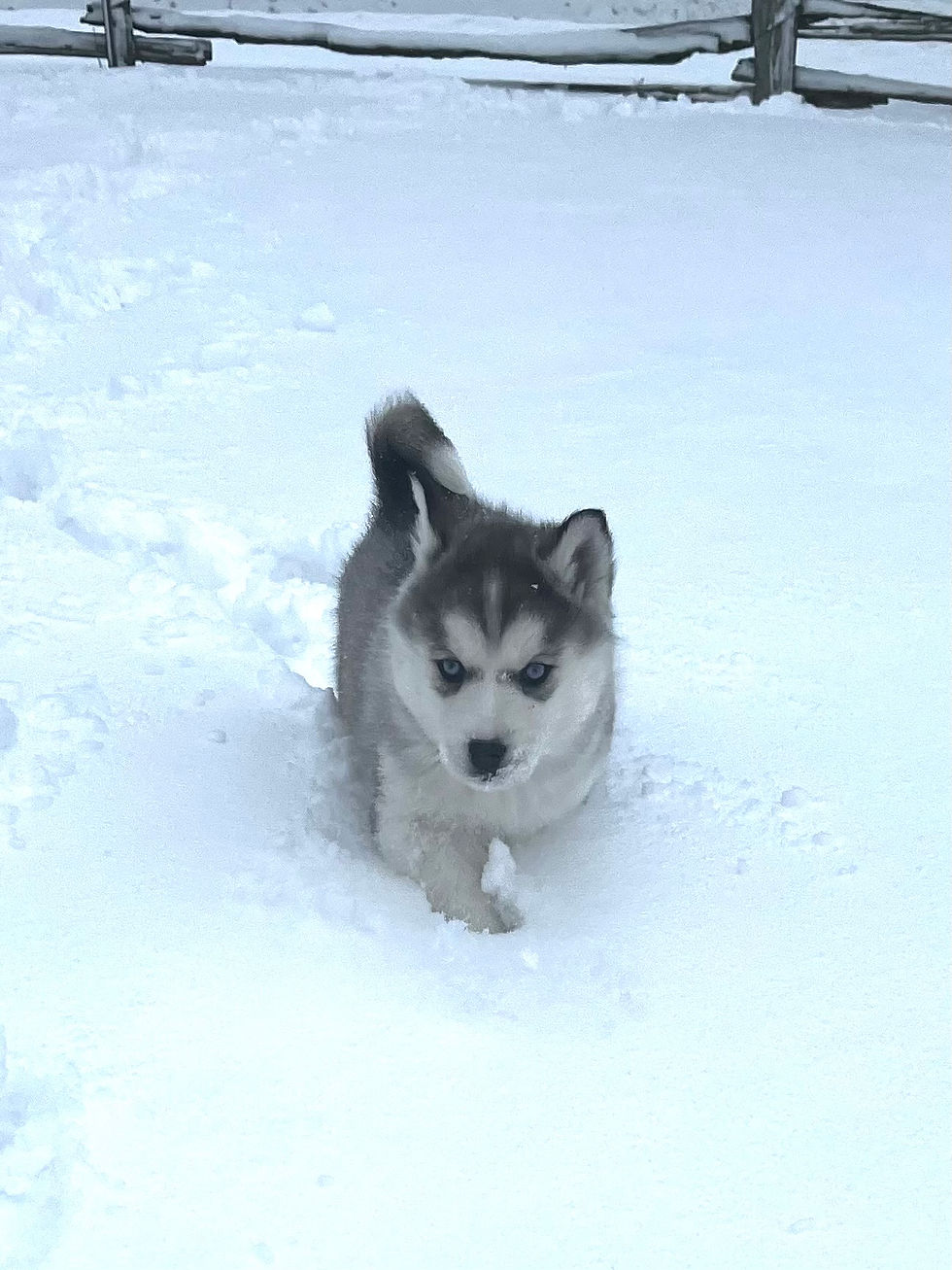Why Do Huskies Curl Their Tails?
- Administrator

- Aug 19
- 2 min read
Updated: Aug 22
One of the most recognizable features of a Siberian Husky—besides their striking eyes and fluffy coat—is their beautiful curled tail. Often called a “sickle tail,” the Husky’s tail arches gracefully over their back, especially when they are alert or happy. But why do Huskies curl their tails? The answer lies in both biology and behavior.
The Purpose of a Husky’s Tail
A Husky’s tail isn’t just for looks—it serves several important functions:
Warmth in Cold Weather
Siberian Huskies were bred as sled dogs in Arctic conditions. When resting or sleeping, a Husky will often curl up in a ball and wrap its tail around its nose. This helps conserve heat and warms the air they breathe, protecting them in freezing temperatures.
Balance and Movement
A Husky’s tail acts as a counterbalance while running, jumping, or making sharp turns in the snow. This is especially important for a working sled dog that needs agility and stability on slippery terrain.
Communication
Dogs use their tails to express emotions, and Huskies are no different. A curled tail carried high often signals alertness or excitement, while a more relaxed tail may show calmness.
Why Huskies Curl Their Tails Upward
The curled tail is a breed trait. According to the breed standard, the Husky’s tail is “sickle-shaped” and should curve gracefully over the back when the dog is alert.
This curl is caused by genetics and tail structure. The vertebrae in a Husky’s tail are shaped and aligned in a way that naturally causes the upward curve. Not all Huskies carry their tail the same way all the time—sometimes it hangs down when relaxed and curls up tightly when excited or in motion.
Do All Huskies Have Curled Tails?
Most purebred Siberian Huskies have a curled or sickle-shaped tail, but the degree of curl can vary:
Tightly curled tails – less common in many Huskies.
Looser curls or straighter tails – still within breed variation but less dramatic.
Puppy tails – some Husky puppies’ tails appear straighter at first and curl more as they grow.
Tail Curl vs. Other Breeds
Huskies share this curled-tail feature with several northern and Arctic breeds, such as the Alaskan Malamute, Samoyed, and Akita. This trait evolved as a survival advantage in cold climates, helping these breeds stay warm during harsh winters.
Final Thoughts
So, why do Huskies curl their tails? It’s a combination of genetics, survival instincts, and communication. Their iconic “sickle tail” helps them stay warm in cold weather, maintain balance while running, and express their emotions. Whether tightly curled over their back or loosely wagging behind them, a Husky’s tail is as functional as it is beautiful.
At Snowsong Siberians, we admire every detail of the Husky’s design—from their hardworking nature to their signature curled tails. These traits are what make Huskies not only stunning to look at but also incredibly appealing.





